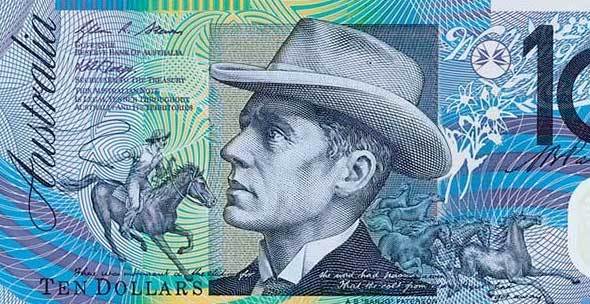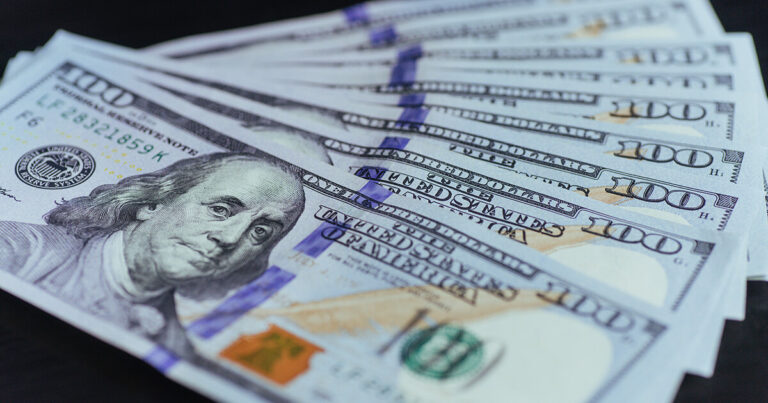
As the American dollar regained its safe-haven status, the spiking treasury yields theme continued to dominate currency trading news, yet in another volatile week in the forex market.
Despite g7’s positive economic updates, the majors and riskier assets could not tame the bulls in charge of the US dollar. Here is the fundamental analysis and financial review of the g7 currencies in the 1st week of March.
According to Investing.com, fundamentals worked strongly against the safe-haven currencies Swiss franc and Japanese yen. Other g7 currencies also lost against the US dollar as investors engaged in risk aversion measures and sought refuge in the greenback.
Let’s look at the fundamentals that drove the market in the week.
The Fundamentals
The Spiking Treasury Yields
Top on the fundamentals that featured predominantly in the currency trading news is the rising bond yields. Furthermore, Fed reserve chair Jerome Powell’s comments on Thursday pushed the yields and the US dollar higher.
He acknowledged that inflation was increasing due to an improving economy but concluded that it was a temporary situation. Financial investors had anticipated Powell would put measures to tame the spiking bond yields, but he failed.
The increasing bond yields caused global stocks and commodity-linked assets to tumble heavily on Thursday and Friday. While other currencies dropped towards the end of the week, the American dollar had a field day gaining the most on Thursday and Friday.
Covid 19 News
The coronavirus pandemics is still with us and was another key driver in the currency trading headlines. As of Sunday 7th, global confirmed cases stood at 117m while the death toll hit 2.6m. On a weekly basis, infection rates have reduced, but the infection curve is far from flattening.
On a positive note, the containment measures and vaccine rollout has slowed down covid 19 infections and related deaths. This fuelled hopes for a quicker economic recovery. But still, new variants are the biggest threat now, according to scientists.
Economic Updates
The g7 economies posted optimistic financial data, fueling hopes of faster economic recovery. However, the data were not sufficient to support the majors and riskier assets against the raving greenback.
Oil Forex Signals

Currency trading news indicates oil prices increased by 7.5% to over $66 per barrel. Oil forex signals that pushed the price upwards include OPEC’s meeting on Thursday and global economic reopening expectations.
Fundamental Analysis And Economic Review Of The G7 Currencies
Table: G7 performance summary
|
Currency pair |
1st March |
7th March |
Average |
Percentage change |
Remarks |
|
USD |
91.036 |
91.990 |
91.280 |
1.219 |
increase |
|
GBP/USD |
1.3922 |
1.3841 |
1.3913 |
0.6532 |
decrease |
|
EUR/USD |
1.2047 |
1.1917 |
1.2016 |
1.3003 |
decrease |
|
USD/CHF |
0.9148 |
0.9309 |
0.9217 |
2.4994 |
increase |
|
USD/JPY |
106.75 |
108.34 |
107.34 |
1.65 |
increase |
|
USD/CAD |
1.2645 |
1.2655 |
1.2650 |
0.6594 |
increase |
|
AUD/USD |
0.7769 |
0.7686 |
0.7755 |
0.2466 |
decrease |
|
NZ/USD |
0.7263 |
0.7159 |
0.7229 |
1.0231 |
decrease |
Usd Stellar Performance
The dollar soared higher in the week, riding off the back of the US Federal Chairman Jerome Powell dovish remarks amid spikes in bond market volatility. It was yet another week in the green for the American dollar, increasing by 1.22%, ending the week at 91.985.
In the week before, it had risen by 0.57%. FED Chair Jerome Powell’s speech on Thursday resulted in a significant upsurge of the dollar to the 91 levels.
According to currency trading news, economic data updates were generally skewed to the positive. In the first half of the week, nonfarm employment figures failed to impress – increasing by 117K against an earlier projection of 177K. The manufacturing sector increased slightly while the service sector hit a snag.
In the second half of the week, the fundamentals significantly boosted the dollar. Better than expected, the nonfarm payroll figures increased by 379k, lowering the unemployment rate from 6.3% to 6.2%. However, the weekly jobless claims disappointed, rising from 736k to 745k.
The US monetary policy favored the dollar. On Thursday, Fed Chair Jerome Powell fueled the Dollar demand overnight. Powell maintained a dovish approach to the spiking Treasury yields, indicating an unwillingness to cap the rising yields.
Besides, the dollar demand increased following the US Senate vote on President J.Biden’s $19 trillion stimulus bill. The senators approved the bill. Also fueling demand for the dollar is the continuing global coronavirus vaccines rollout.
The Pound’s Woes Continue
While it was busy in the US, the UK’s economic dairy was relatively quiet. However, the few financial data released failed to uplift the pound, and by the end of the week, it weakened by 0.66%, dropping to 1.3841 against the dollar. The pound had fallen by a nearly similar margin in the previous week, falling by 0.58%.
The UK’s yearly budget release and finalized private sector PMI figures were in action on the economic calendar. The mixed data caused the pound to fluctuate against the dollar in the week. While the manufacturing PMI increased, the services sector disappointed with a slight improvement in the construction PMI figures having a muted impact on the pound.
According to currency trading news, the UK’s government annual budget did not shake the forex market at the end of the week.
EUR/USD
In a relatively busy week in the eurozone, the performance of the euro was poor. In the week, the euro slid by 1.33% to close at 1.1915 against the dollar. Previously the euro had fallen by 0.36%. On the economic data calendar, while the service sector woes damaged the pound, the manufacturing sector delivered the upside.
Besides, negative retail sales, inflation, and unemployment figures worsened the euro’s woes. Notably, the retail sales slumped, worse than predicted. Towards the end of the week, German posted an improved economy – better than expected – but was not sufficient to uplift the euro out of the red.
Despite the continuing coronavirus rollout in the eurozone, lockdown measures and travel restrictions undermined the euro’s performance.
CHF Currency To USD – Worst Performer

The Swiss franc had a tough week losing 2.4494% against the US dollar. Chf currency to usd exchange rate was significantly weakened by the strengthening dollar, increasing bond yield, and positive sentiments.
Furthermore, a more robust US economic outlook, Joe Biden’s fiscal package bill, and the continuing covid 19 vaccines rollout favored the dollar against the Swiss franc. In the second part of the week, global sentiments turned negative, adding more woes to the Swiss currency.
USD CAD News
In a busy week in Canada, the Loonie’s performance was primarily driven by covid 19 news, economic updates, and crude oil prices. Continuing from the uptick in the 3rd quarter, Canadian’s 4th quarter GDP grew by 2.3% but contracted by 3.23% on a yearly basis.
Currency trading news indicates Canada’s economy grew modestly by 0.1%, down from a previous 0.8% growth. Also, both trade data and Ivey PMI improved, uplifting the Loonie.
At the end of the week, the Loonie reduced by 0.62% to 1.2659 against the American dollar. Closer to the same margin, the Lonnie had fallen by 0.57% in the previous week. Oil price surge over the week leveraged the Lonnie but not enough to pull it out of the rec.
AUD Currency To USD – Bearish

In the first week of March, the aud currency to usd exchange rate dropped by 0.26% to 0.7686. On the economic front, manufacturing activities increased while 4th quarter profits dipped by 6.6%.other statistics include trade data, retail sales, and GDP, all skewed to the positive.
Towards the end of the week, the US bond yields and Jerome Powell dovish sentiments worked against the Australian dollar.
Nz Currency To USD

It was also a bearish week for NZ currency to usd, with the Kiwi dollar losing 0.91% to usd. With little economic data from New Zealand, the kiwi’s performance was mainly driven by negative global sentiments and covid 19 pandemics.
The spiking bond yields led to a drop in stock and the commodity related-related currency pairs. Also, China’s economy dropped, pulling the commodity-related down as well.
Meanwhile, in the far east,
Japanese Currency Trend Continues To Wobble Against The Dollar

Fewer economic data from Japan could not salvage its currency against the strengthening dollar. In the previous week, the Japanese currency trend had dropped by 1.06%, but this time around, it went down further and fell by 1.63% to the usd.
On the economic front, both the private sector and 4th quarter capital spending improved though not sufficient to increase the yen’s light at the end of the tunnel. However, the spiking bond yields and the continuing covid 19 vaccines rollout significantly pressured the yen.
Conclusion
The greenback was the biggest winner this week, with the Swiss franc and Japanese yen being the biggest losers. Covid 19 news, bond yield, and additional stimulus from the US will continue to drive currency trading news in the weeks to come.
Overall the riskier assets and US dollar benefited from the bond yield theme.
Must Read: World Trade Market Analysis From 22nd to 28th Feb, 2021




